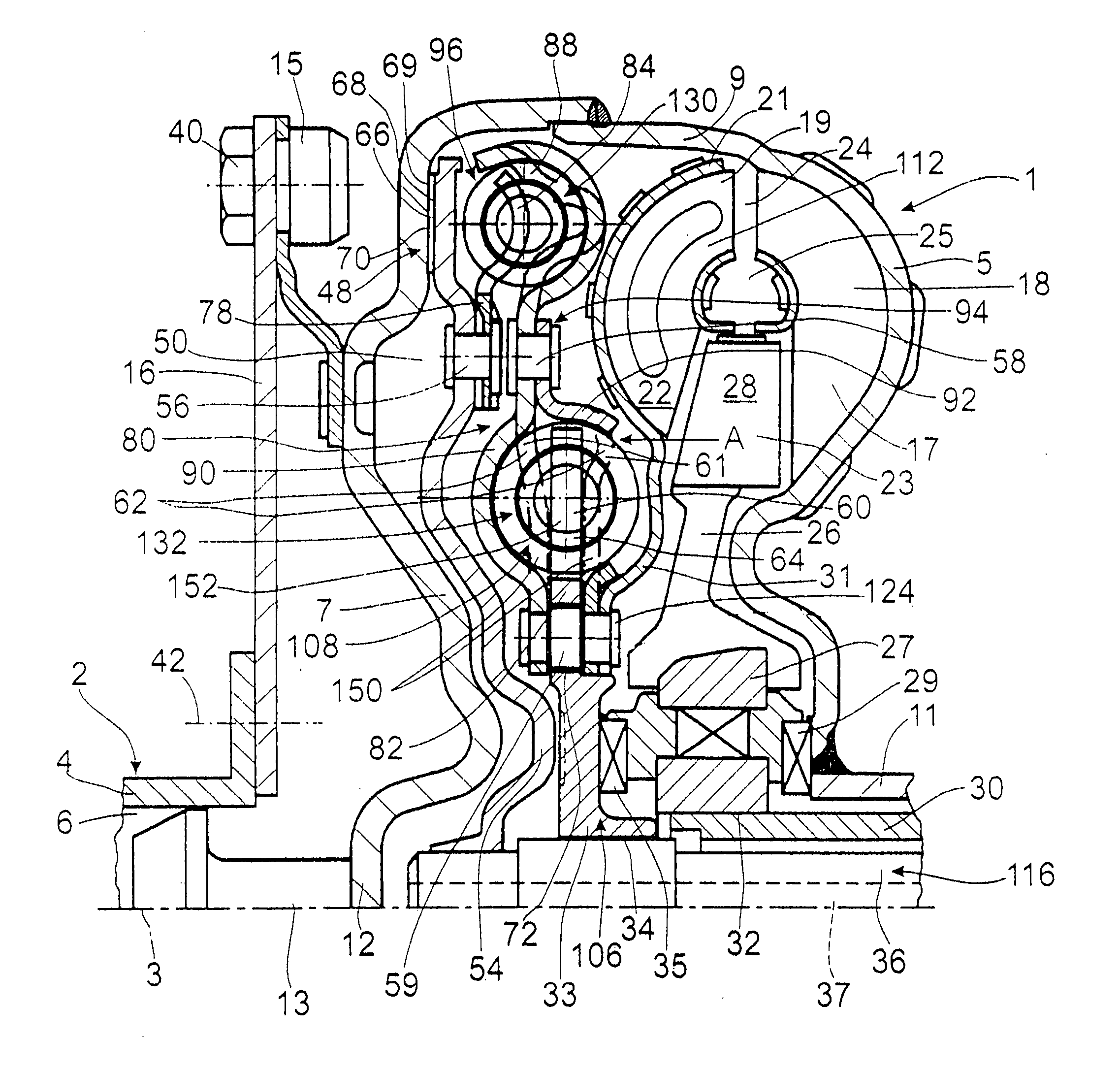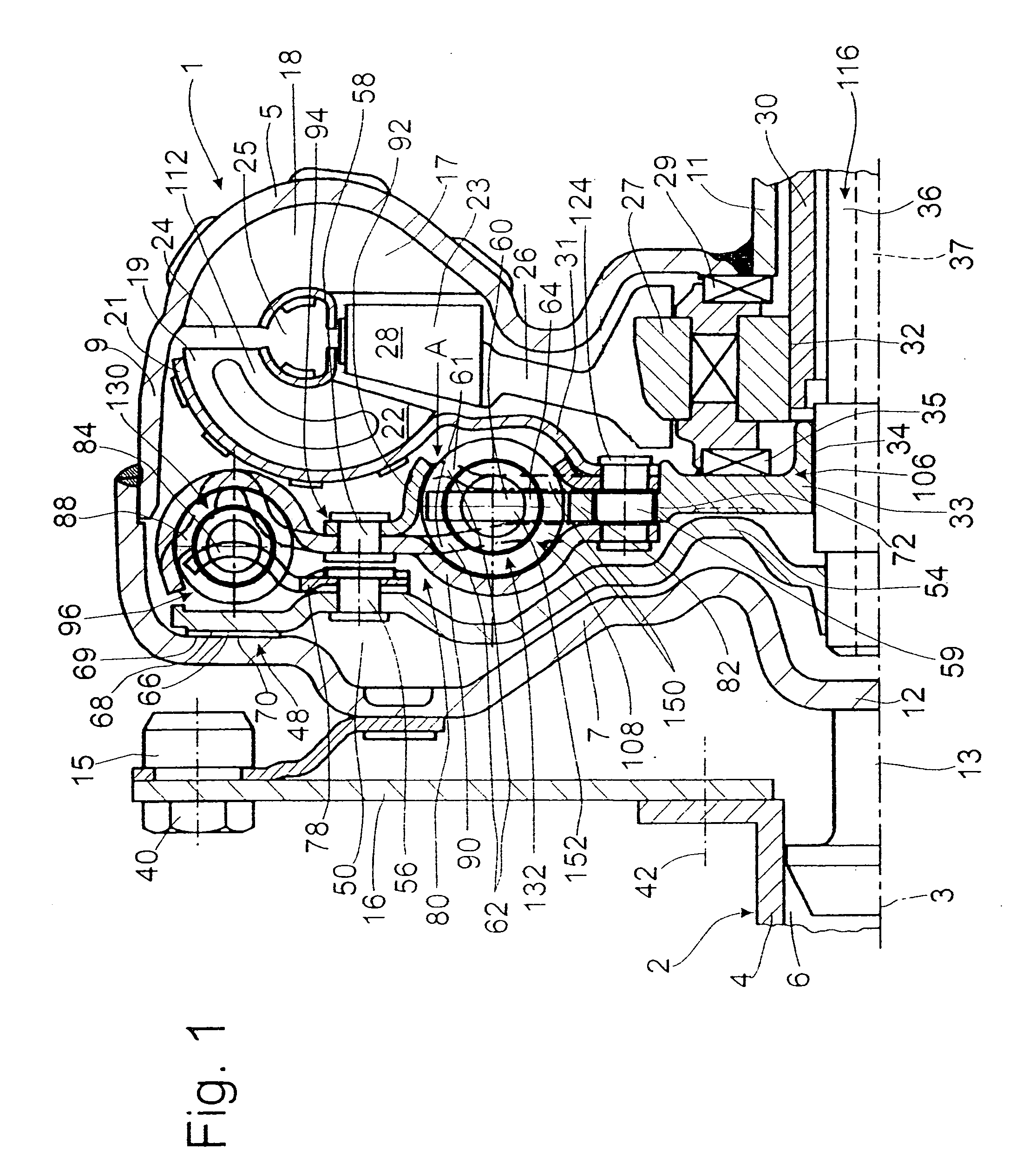Torsional vibration damper
a torsional vibration and damper technology, applied in the direction of fluid couplings, rotary clutches, gearing, etc., can solve the problems that the damping curve provided by a tdc can still prove insufficient, and achieve the effect of shortening the travel distance and reducing the stiffness of the first energy storage group
- Summary
- Abstract
- Description
- Claims
- Application Information
AI Technical Summary
Benefits of technology
Problems solved by technology
Method used
Image
Examples
Embodiment Construction
[0033]FIG. 1 shows a hydrodynamic clutch arrangement 1 in the form of a hydrodynamic torque converter, which is able to rotate around an axis of rotation 3. The hydrodynamic clutch arrangement 1 has a clutch housing 5, which, on the side facing a drive 2, such as the crankshaft 4 of an internal combustion engine, has a housing cover 7, which is permanently connected to a pump wheel shell 9. This shell 9 merges in its inner radial area with a pump wheel hub 11.
[0034] The housing cover 7 has in the radially inner area a journal hub 12 carrying a bearing journal 13. In a manner known, the bearing journal 13 is mounted in a recess 6 in the crankshaft 4 to center the clutch housing 5 on the drive side. The housing cover 7 also has a mounting receptacle 15, which is used to attach the clutch housing 5 to the drive 2, namely, by way of the flexplate 16. This flexplate 16 is attached to the mounting receptacle 15 by means of fastening elements 40 and to the crankshaft 4 by means of fasteni...
PUM
 Login to View More
Login to View More Abstract
Description
Claims
Application Information
 Login to View More
Login to View More - R&D
- Intellectual Property
- Life Sciences
- Materials
- Tech Scout
- Unparalleled Data Quality
- Higher Quality Content
- 60% Fewer Hallucinations
Browse by: Latest US Patents, China's latest patents, Technical Efficacy Thesaurus, Application Domain, Technology Topic, Popular Technical Reports.
© 2025 PatSnap. All rights reserved.Legal|Privacy policy|Modern Slavery Act Transparency Statement|Sitemap|About US| Contact US: help@patsnap.com



